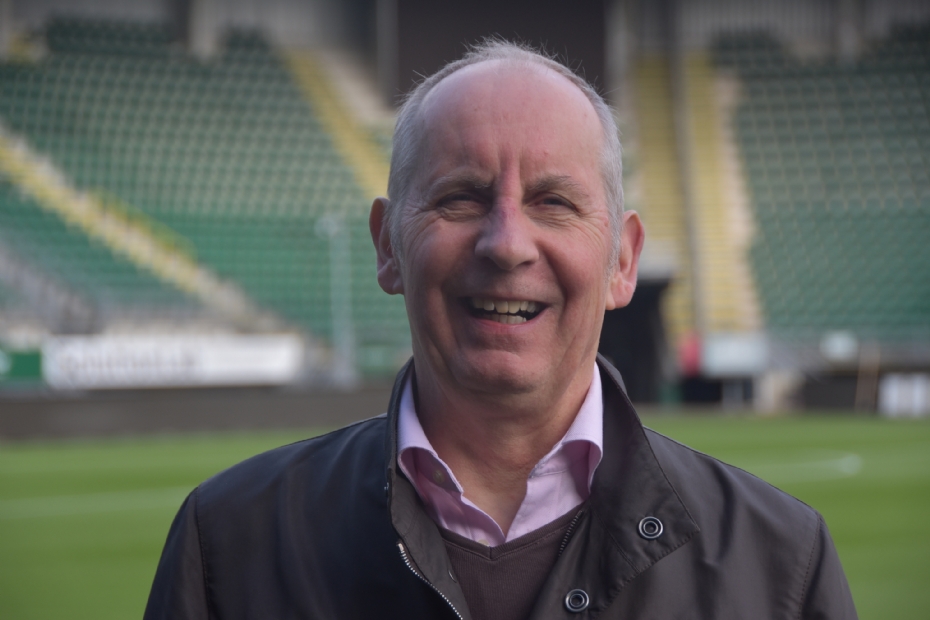Monochromatic UV-C LED light kills turf-damaging pathogens |
|
| GARDEN AND PARK TECHNOLOGY |
|
|
|
|
 |
| 148 sec |
The LEDmaster UVC 100
The UV-C light technique for combating pathogens such as fungi, bacteria, and viruses is well known. Now, there is a compact module with UV-C LEDs that can be mounted on a mower. The LEDs emit a monochromatic light beam. Fieldmanager was the first to receive a press briefing on this development.
UV-C light, with wavelengths ranging from 100 to 280 nanometers (nm), is a shortwave radiation. UV-C light at a wavelength of 265 nanometers can eliminate microorganisms, provided they receive sufficient energy in joules. Overexposure can be harmful. 'So never look directly into this type of light,' warns Mark van der Ende (AgroLED). He holds the patent for these special energy-efficient and compact LED lamps with a silicone lens. These LEDs emit monochromatic UV-C light onto the turf from an aluminum housing that is open at the bottom. This innovation could help many field managers combat fungal infections while mowing.
At the B!ngoal Stadium, the hybrid field is illuminated two to three times per week using this LED module attached to the mower, and the results are astonishing, according to those involved. Felix Oudshoorn is the mastermind behind this application. He spent years in the industrial gases market before taking on roles at Aquaco and TLS. Oudshoorn was already familiar with the effects of this specific type of light from the greenhouse industry. He thought: a spin-off of this technology could be valuable for sports fields.
He explains: 'Lamps already existed, often in the form of traditional gas discharge lamps that spread UV-A, UV-B, and UV-C through a combination of various gases and amalgam (a mercury alloy). In the greenhouse industry, they are used to combat mildew. I also knew about the use of LEDs in the meat processing industry, where hygiene is crucial. Additionally, the medical sector utilizes them for disinfection. The COVID-19 crisis increased interest in a more refined technology with LED lamps. That's when I decided to develop something for field managers, designed specifically with the end-user in mind.'
 | | The mastermind, Felix Oudshoorn |
|
|
A single operation
Oudshoorn continues: 'The technology had to be safe, easy to handle, and able to function autonomously on a mower—without adding an extra task. As I was thinking about the Green Deal the sector had agreed on, I came into contact with an expert in this field, Mark van der Ende, during the COVID-19 crisis. He owns AgroLED, a company that develops and produces various specialized LEDs and applications. We began experimenting with 265-nanometer LED light.
We also tested this technology at ADO Den Haag, where they were dealing with leaf spot disease. Over time, we noticed gradual improvements. When they also experienced an outbreak of red thread and/or Fusarium, they started applying the treatment every other day. The fungal outbreak quickly receded—without any additional treatments.
I was in my car in France when Van der Ende called me with the breakthrough: "These LED modules really work, Felix." I was stunned that the theory, based on his calculation model, aligned so well with real-world results. I realized it was time to bring this technology to market.'
Purely monochromatic
LED specialist Van der Ende explains more about the technology developed within AgroLED. 'These LEDs produce light of a single, specific color,' he says. 'That's what we call "monochromatic" light. The silicone lens focuses this invisible light directly onto the grass with a 24-degree radiation angle.
High-pressure gas discharge lamps with a similar function, despite appearances, do not exclusively emit monochromatic light. In fact, only 15 to 20 percent of their output falls within the required 265-nanometer wavelength. Additionally, these lamps emit light in all directions—including upwards. That's why they often require a reflector to improve efficiency. However, even with a reflector, the effective amount of light reaching the grass is six to seven times lower than what our UV-C LEDs achieve.
This means pathogens need a much shorter exposure time to the UV-C light. Moreover, LEDs consume significantly less energy, and their light spectrum remains stable regardless of temperature. This is not the case with high-pressure gas discharge lamps, where the light intensity on the surface decreases as temperature fluctuations occur.
The LED module we developed is extremely robust, featuring elements about 30 centimeters long, each containing twelve LEDs. Each LED is individually sealed with silicone, achieving an IP67 waterproof rating. This means the module can be used in all weather conditions.'
|
|
'It can be used in all weather conditions'
| |
|
This article was originally published on January 6, 2025, on the Fieldmanager website.
| LOG IN
with your email address to respond.
|
|
|
| There are no comments yet. |
Tip the editors
|
| |
Anyone can place small ads for free through their own account.
Place a free ad
|
|
|
|